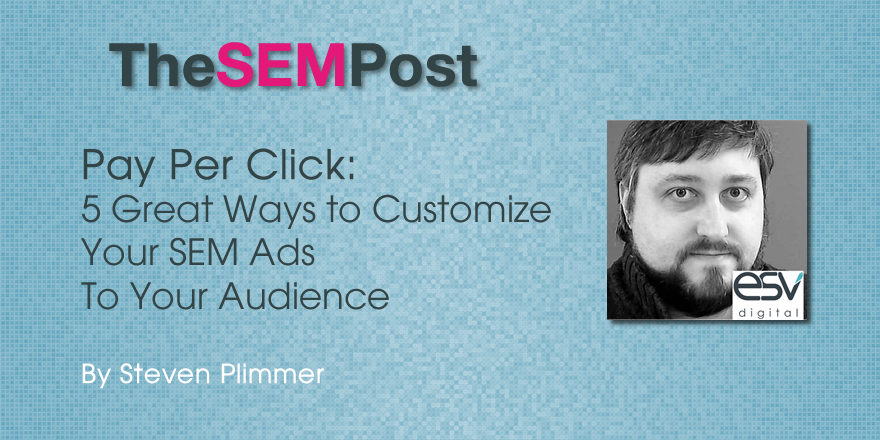The power of search ads is often cited as being able to cater messaging and your keyword set to the intent of the user. This is true but there is another powerful element we can leverage in addition to knowing the likely user intent: ad customization based on the broader context.
The exact moves you make and how you implement the messaging customization has to be based on data in your account (the patterns you see) and some practical concerns (e.g. would too many ad variations fill up your day so you can’t deal with anything else?).
But there are 5 particularly attractive ways to build context into your ads in such a way that they can stand out, speak directly to the user but without the need to seem creepy. This is in addition to the Dynamic Keyword Insertion approach, which is the most basic form of customization.
1) Device – Mobile and non-mobile
The search engines now let you create mobile-preferred ads so take advantage of this in every ad group. Write ads that are aware they will be shown on mobile devices with mobile-friendly display URLs and an assurance that your site is great for the user’s mobile phone.
Not using mobile preferred ads is preventing you from exploiting this growing traffic source to it’s greatest extent.
2) Time
Within the day, you will find different conversion rates and fluctuations in volume and CPCs. Use these patterns to discern whether it’s useful to have a set of evening campaigns, for instance, to mention the segment of day. You can combine this with the extra mobile-preferred ads to have a truly real-time feel to the ads.
3) Location
You could have national targets, state targets and city targets on dedicated campaigns, which state the location (in state and city campaigns) in the ads. Prioritize such a design for keywords that mention the location but you can phase in more generic keywords so you can stand out from competitors who are not mentioning the location of the user.
4) Day
You may find it better to simplify this to weekdays vs weekends but it’s down to the nature and priorities of your account. But mentioning the day (or the “weekend”) in the ads can help you stand out and to customize the messaging in creative ways (Wednesday = “hump day”, everybody hates Mondays etc.). Clearly, though, structuring multiple campaigns for all 7 days of the week could be overkill on many accounts so a compromise approach may work better.
5) New visitors vs returning visitors (non-converted)
Use the remarketing lists you can create in search engines to have different messages (e.g. incentives) for users who are not yet familiar with your brand as opposed to those who have been to your site before. Thinking about this can send you in a range of creative directions.
Conclusion
If you combine some of these approaches, the cumulative customization can significantly drive user engagement in terms of both CTR and conversion rate. The higher CTR should lead to higher Quality Score and the knock-on effect of that is improved efficiency and a happy advertiser.
All of this must be tested in the context of the account you’re working on but I’m confident you will find some encouraging trends emerging if you try these out.
Aside from customizing by context in these ways, you now can use countdowns in ad copy and mobile ad extensions but I wanted to stay with the core customization strategies here. Do you have a killer ad customizing example to give us?
Steven Plimmer
Latest posts by Steven Plimmer (see all)
- Drive Sales With These 12 PPC Remarketing Tactics - May 2, 2016
- CRO: Frame Your Customers’ Choices to Maximize Revenue - April 1, 2016
- In PPC, What Was True Then May Not Be True Now - February 11, 2016
- 5 Great Ways to Customize Your SEM Ads to Your Audience - January 15, 2016
- PPC: When To Automate And When Not To Automate - December 4, 2015
